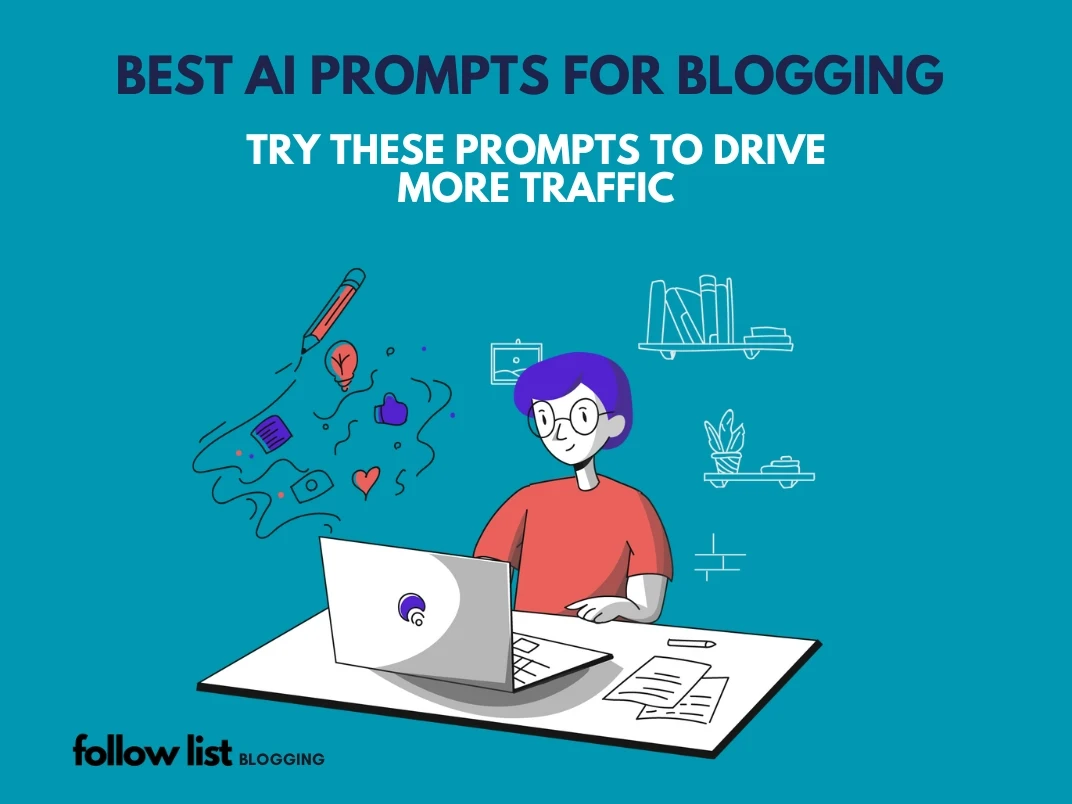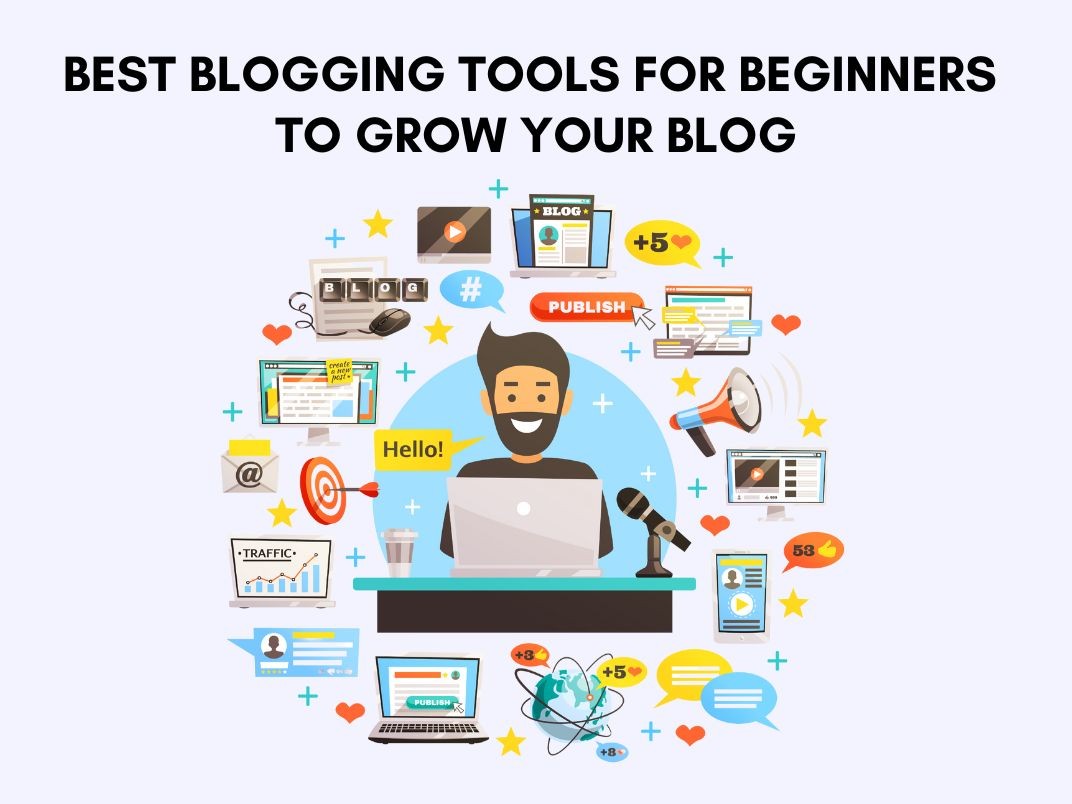
Table of Contents
Listen to this article
How to Write a Blog Post: A Step-by-Step Guide
Writing a blog post can be a rewarding way to express your thoughts and ideas, engage with your audience, and establish yourself as an expert in your field. However, it can also be a daunting task if you're unsure where to start. In this comprehensive guide, we will walk you through the process of writing a blog post, providing you with valuable tips and techniques to ensure your content stands out.
Whether you're a beginner looking for blog post writing tips or an experienced writer seeking to refine your skills, this guide is designed to equip you with the knowledge and guidance you need to create well-written, engaging, and optimized blog posts.
Blog Post Writing Tips
- Finding an interesting Title
- Plan H1, H2, H3 headings wisely
- Keyword Research
- An SEO optimized article
- Give accurate, and complete information
- Write content understanding your audience
- Write clear content incorporating keywords naturally
Here in this article, you will get detailed knowledge about writing the blog post and associated tools to make your content more interesting and valuable.
Step by Step Guide to Write a Blog Post
1 Understanding Your Audience
Before you start writing your blog post, it is essential to have a clear understanding of your target audience. By conducting audience analysis and creating buyer personas, you can tailor your content to their needs and preferences.
2 Conducting Audience Analysis
Start by asking exploratory questions to gain insights into your target audience's demographics, interests, and challenges. This will help you identify their pain points and topics that resonate with them. Additionally, you can use market research tools to gather data and analyze trends that relate to your audience.
3 Creating Buyer Personas
Formalize your audience analysis by creating buyer personas - fictional representations of your target audience segments. These personas should include relevant information such as age, gender, occupation, and interests.
They will serve as a guide for your content creation process, allowing you to understand and address the specific needs of your audience
By understanding your audience through analysis and buyer personas, you can create blog posts that effectively resonate with them. This deeper understanding will inform your content decisions, from the tone and style of writing to the topics and examples you include.
Having a clear understanding of your audience ensures that your blog post meets their expectations and provides value. Now that you have a solid foundation on how to start writing a blog post.
4 Researching Your Topic
To create a compelling and informative blog post, thorough research is necessary. Start by choosing a relevant and interesting topic that aligns with your brand and audience.
Use blog post research and keyword research tools to identify keywords with good SEO potential and to understand search intent. Analyze similar content in your niche to gain insights into what readers want and how you can stand out with valuable information.
A SERP (search engine results page) analysis can provide additional data on keyword competition and user behaviors. By combining these research techniques, you can ensure your blog post is well-informed and targeted towards your audience's needs.
- Choose a relevant and interesting topic
- Utilize blog post and keyword research tools
- Analyze similar content and perform a SERP analysis
Choosing a Relevant and Interesting Topic
When selecting a topic for your blog post, it's essential to consider your brand's focus and expertise. Aim for a subject that aligns with your audience's interests and addresses a specific pain point or provides a unique perspective.
Utilizing Blog Post and Keyword Research Tools
Take advantage of various blog post and keyword research tools available to identify popular and relevant topics within your niche. These tools can provide data on search volume, competition, and related keywords, enabling you to make informed decisions about the topic you want to write about.
5 Creating an Outline
Before you start writing your blog post, it is crucial to create a well-structured outline. An outline serves as a roadmap for your content, helping you organize your ideas, maintain coherence, and ensure a logical flow throughout your writing. By including headings, subheadings, target keywords, word count goals, and any helpful resources or assets you plan to include, you can effectively organize your thoughts and streamline the writing process.
Having a well-organized outline also helps you easily identify any gaps in your content and make necessary adjustments. Additionally, when it comes time to revise or update your blog post, having a clear outline allows you to quickly locate and modify specific sections.
Subheadings of blog post play a crucial role in your outline, as they break down your content into digestible sections and make it visually appealing. They not only improve readability but also help readers skim through the blog post and find the information they need quickly. Ensure that each subheading is descriptive and accurately reflects the content that follows.
Organizing your content through a well-structured outline is a fundamental step in creating a successful blog post that engages your readers and keeps them hooked until the end. With a clear roadmap in place, you can confidently embark on the writing process, knowing that you have a solid foundation to build upon.
Creating an outline is a very important part of writing the whole blog post and thus it is good to create H1, H2 and H3 headings clearly while creating an outline.
6 Crafting Engaging Headlines
The headline of your blog post is a crucial element that can attract readers and set the right expectations. A well-crafted headline should be both descriptive and attention-grabbing, establishing the tone of your post and piquing the curiosity of your audience. To create engaging headlines, consider incorporating numbers or asking thought-provoking questions to draw readers in.
Instead of brain-storming headline ideas better take inspiration from successful titles within your niche, but always bring a unique perspective and provide added value to differentiate yourself from the competition. By using descriptive language and capturing the essence of your blog post in the headline, you can entice readers to click and delve further into your content.
As you continue to refine your headline-writing skills, remember that it's essential to strike a balance between creativity and clarity. Create H1, H2 and H3 headings with mindfulness. Your H3 headings should justify H2 heading while H2 headings should come under the H1 heading.
When using headings and subheadings, structure them logically to create a cohesive flow within your blog post. This helps readers navigate through your content easily and locate specific sections of interest. By using appropriate font size, line spacing, and overall aesthetics, you enhance the visual appeal of your blog post.
A blog post has catchy and intriguing headlines that can attract attention. They should still accurately represent the content of your blog post. Authenticity and relevance are key to building trust and encouraging readers to engage with your content.
7 Writing the Body Content
Once you have your outline ready with headings, it's time to get into writing the main content of your blog post. To create a high-quality piece, pay attention to spelling, grammar, and punctuation to ensure a professional tone. Each sentence should provide value and avoid unnecessary fluff.
When incorporating target keywords, do so naturally to maintain readability. Use clear and concise sentences to convey your message effectively. Additionally, including internal links to relevant pages on your site can enhance the user experience and provide additional information to your readers.
To improve readability, consider using bullet points, images, and other visual elements. Breaking up your content with these elements can make it more engaging and easier to digest.
8 Analyzing Similar Content and Performing a SERP Analysis
Examining existing content on similar topics can give you an idea of what works well and what gaps you can fill. Conduct a SERP analysis to understand the search engine results for your target keywords. Observe the featured snippets, people also ask sections, and other elements that create search intent.
By conducting thorough research, you can create a blog post that provides value to your audience, targets relevant keywords, and stands out in search results.
9 Adding Visual Elements and Formatting
To make your blog post visually appealing and engaging, it's important to incorporate visual elements that enhance the overall reading experience. Images, audios, videos, testimonials, quotes, and statistics are great examples of such elements that can bring your content to life.
When including images, choose relevant and high-quality visuals that complement your text. Images can help break up lengthy paragraphs, convey information, and create visual interest.
For example, you can use screenshots, infographics, or stock images to illustrate your points. To illustrate, consider inserting the following image:
Quotes can add credibility and variety to your blog post.
Use quotes from industry experts, relevant studies, or testimonials to support your claims and engage your readers. Make sure to properly attribute the quotes to their original sources.
Statistics provide concrete evidence and lend credibility to your blog post. Incorporate relevant statistics that support your statements or highlight industry trends. When including statistics, remember to cite your sources to ensure accuracy and transparency.
In addition to incorporating visual elements, pay attention to the formatting of your blog post. Proper formatting makes your content more readable and digestible. Use techniques such as bullet points, shorter paragraphs, headings, and subheadings to break up your text into smaller, scannable chunks. This allows readers to quickly find the information they need and improves overall readability.
Incorporating visual elements to blog post such as images, quotes, and statistics, and utilizing effective formatting techniques, you can make your blog post captivating, visually appealing, and easy to navigate. Remember, a well-structured and visually appealing blog post encourages readers to stay engaged and spend more time on your site.
Till this step, your blog post is ready. However this much is not sufficient to achieve your goal. Now, you should optimize your content as per search engine’s terms and conditions.
Read below to understand more about how to SEO optimize any blog post.
Optimizing for SEO
To maximize the visibility of your blog post in search engine results, it is crucial to optimize it for SEO. Proper on-page optimization and strategic keyword placement can significantly improve your blog's search rankings. Here are some key steps to optimize your blog post:
1. Strategic Keyword Placement
Place your target keywords strategically throughout your content to signal to search engines what your blog post is about. Incorporate your keywords naturally within your headings, subheadings, and body paragraphs. However, avoid keyword stuffing as it can harm your SEO rankings.
2. Optimize On-Page SEO Factor
Pay attention to important on-page SEO factors such as the page title, URL, and meta description. Include your target keyword in the page title and ensure that the URL reflects the content of your blog post. Craft a compelling meta description that accurately summarizes your blog post and entices users to click.
3. Internal and External Linking
Incorporate relevant internal links to other pages on your website to provide readers with additional resources and improve the overall user experience. Additionally, consider including external links to reputable sources that support the information you provide in your blog post.
These links can help search engines understand the context and credibility of your content.
By implementing these strategies, you can enhance the SEO value of your blog post and increase its chances of ranking higher in search engine results.
Remember that optimizing for SEO is an ongoing process. Stay updated with the latest SEO trends, regularly analyze your performance, and make necessary adjustments to stay competitive.
Summary
Writing a blog post requires careful planning, research, and organization. By understanding your audience, researching your topic, creating an outline, and crafting engaging content, you can write a blog post that captivates your readers.
Remember to optimize your post for SEO to increase its visibility in search engine results. Strategic placement of your target keywords in headings, subheadings, meta tags, and throughout the content will help improve your post's SEO performance.
Additionally, don't forget to provide a compelling conclusion that wraps up your blog post and prompts readers to take action. Whether it's encouraging them to leave comments, subscribe to your newsletter, or share your post on social media, a strong call-to-action can significantly impact engagement and conversion.
Writing a successful blog post is an ongoing learning process, so always refine your skills and experiment with different approaches. Stay updated with the latest trends and best practices in the industry, and always strive to deliver valuable, informative, and well-crafted content to your audience.
Our expert team will help you with writing a blog post effectively. Also, you can subscribe to our News Letter to stay updated with trending topics of the digital marketing community.





